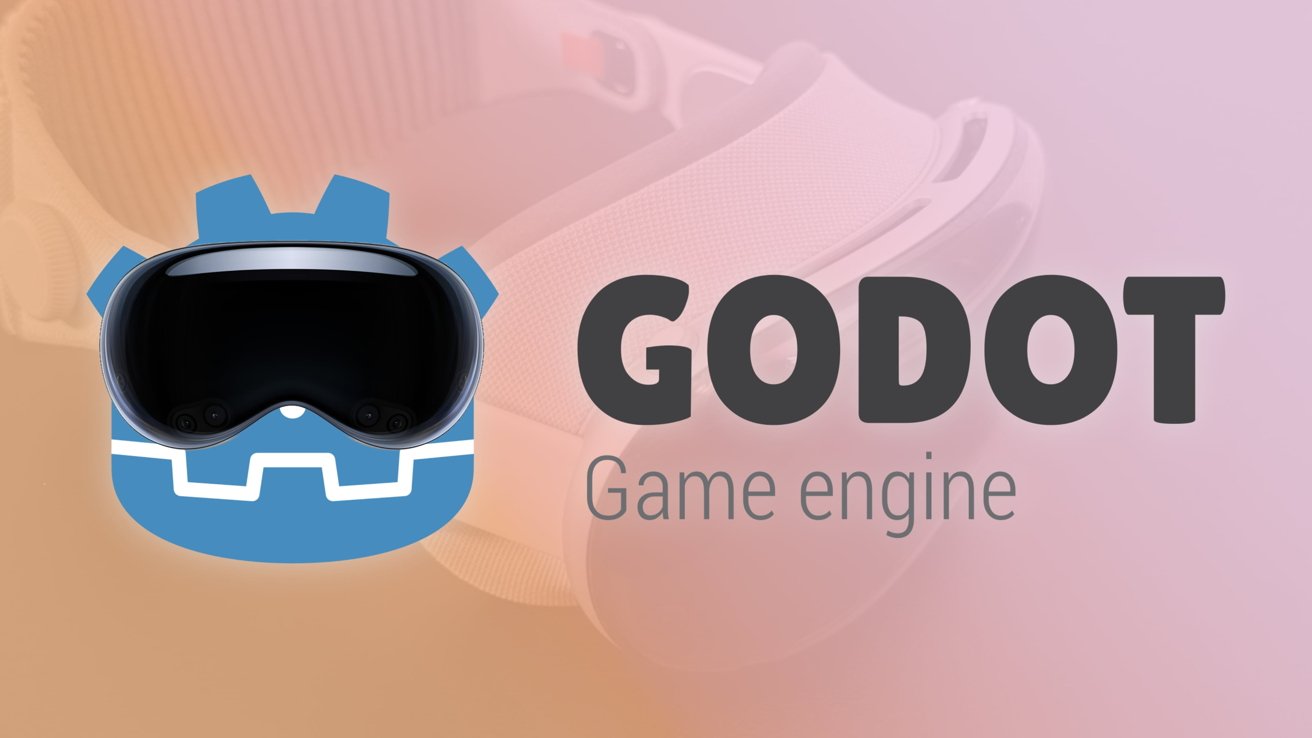Apple offers visionOS support to the Godot game engine
Apple is continuing its push to bring more games to its platforms, with the latest involving an offer to add visionOS support to the Godot game engine.

Apple has pledged visionOS support for Godot
Apple has been gradually making more of an effort to encourage developers to make their games available on macOS and its ecosystem as a whole. Now, it seems that it's trying to get more gaming content for the Apple Vision Pro.
A pull request on the Github page for Godot, a free and open-source game engine, has Apple making an offer to help the engine work on Apple Vision Pro. The request, by Ricardo Sanchez-Saez of the visionOS engineering team, states that Apple wants to contribute Vision Pro support to the Godot engine.
According to the post, the goals of the contribution are to support current Godot games to run natively within a window on visionOS. A visionOS VR plugin for Godot is also expected, which will make it easier to create immersive experiences for the headset.
So far, the team has managed to create a way to compile and link Swift files with Godot, and has a working version of the Vision Pro VR plugin. However, it is still working to add visionOS as a platform to Godot, and is doing so by reusing code for the existing iOS support.
A bigger gaming bet
Offering to incorporate Vision Pro support into Godot offers Apple a few good benefits. For a start, the initiative could encourage developers to use Godot, an established engine, to create more content for the Apple Vision Pro itself.
The Apple Vision Pro isn't a massive gaming device, unlike other VR headsets available to consumers. That equates to relatively few immersive games for the Apple Vision Pro versus its competition, such as the Meta Quest headset lineup.
It is also certainly an expansion of its current initiatives to increase gaming on its platforms. Aside from courting high-tier game developers to bring AAA titles to Mac, projects like the Game Porting Toolkit have also helped developers see what their games could look like running on Mac hardware.
Building for Godot
The decision for Apple to bring Vision Pro support to Godot may seem a bit unusual, but it's one that does make sense. At least, if you consider the current game development landscape.
The two main game engines used for development are Unreal Engine and Unity, but Godot is growing in popularity. As a free game engine, it does away with any need for developers to pay licenses to Epic or Unity to use the engines commercially.
The open-source nature also makes it easier for people to contribute to the project as a whole, or to add their own code to customize it for their own creations.
Apple may also find Godot as needing assistance in developing the visionOS support, since it isn't being worked on by a commercial entity. Epic and Unity both have teams of developers working on mixed reality tech for their engines in a paid capacity, while Godot relies on volunteer efforts.
While Godot is getting popular with developers, especially cash-strapped indies and hobbyists, it has yet to really be used for a major release. So far, it has enjoyed successes with games like Buckshot Roulette and Cassette Beasts, but even these are moderate and far from the revenues of mainstream titles.
Apple's visionOS support also won't be a first for Godot. It already has a Meta toolkit so the engine can be used to produce XR games for the company's headsets.
Read on AppleInsider

Comments
They asked the community for help with this as they don't have many rendering system engineers. Most of them work for the big companies like Epic, Unity and the big game studios on their internal engines:
https://wccftech.com/godot-engine-creator-will-go-with-full-path-tracing-instead-of-a-lumen-like-hybrid-nanite-like-system-not-planned/
Someone made a test renderer for Godot, this has no denoiser, caching or complex shading support:
The focus on integration with the big game engines seems less important. AR/VR experiences are more cinematic than interactive so Apple could build a basic engine with the main focus being a fast, high quality renderer.
The hard parts for community developers to make are the rendering system, compilers and the platform support.
The other parts of the engine are much easier to take care of, even physics, particles and volumetric shading can be done by community developers.
If Apple had a rendering and deployment system, people could build the scene in any game engine and code it there. Then they just need to convert the scene to a compatible format for their rendering API. This would save having to modify 3rd party engines directly and in a lot of cases, people would be able to use Apple's core engine directly. This would have a faster turnaround to being production-ready.
Apple's immersive dinosaur demo doesn't need a huge game engine. It just needs an animated model in a standard scene format and some interaction.
People don't want to get locked into the Swift language as it's not well-supported across platforms like C#, C++, Python etc so having multiple language runtime support would be needed but the API can be small. Mainly it's moving objects in a scene and playing animations, then the renderer draws it.
Apple doesn't have to build this alone, they can collaborate with Microsoft, Nvidia, Valve, Pixar and others. This can become an industry standard rendering library and would give a lot more competition to Unity and Epic because it can spawn dozens of larger engines that rival them on visual quality.